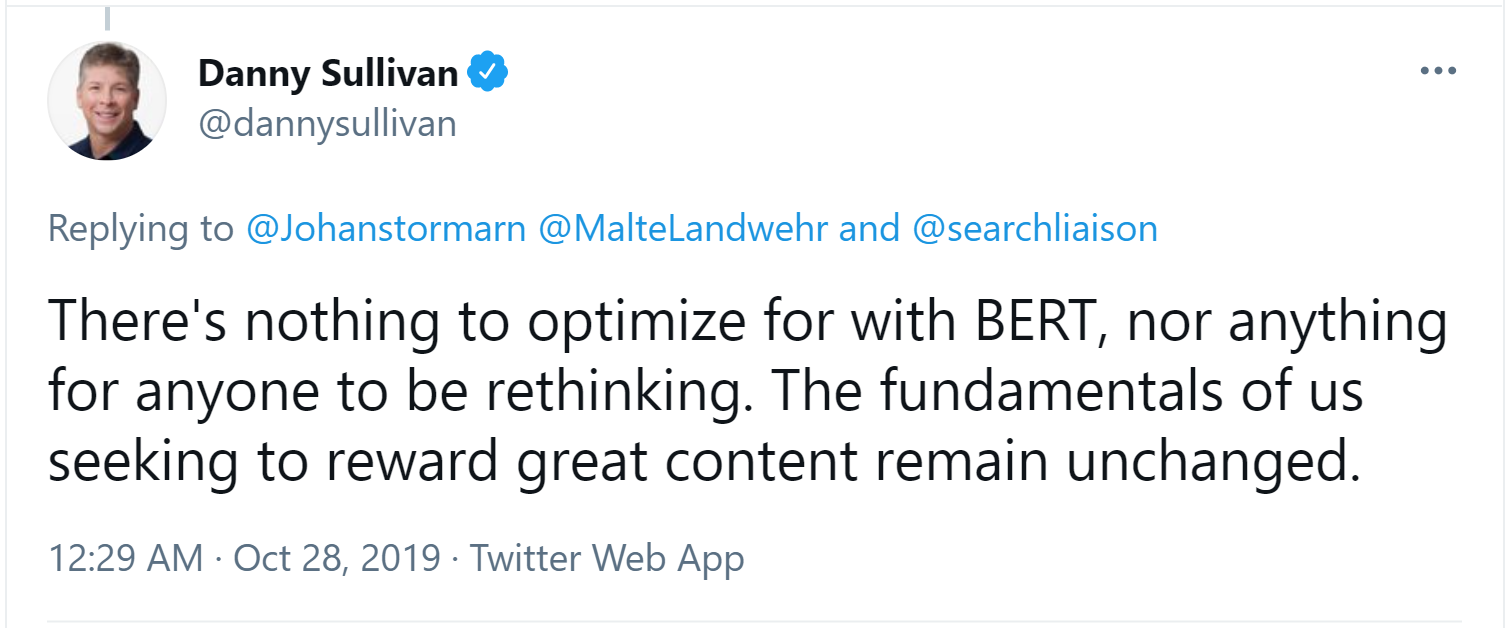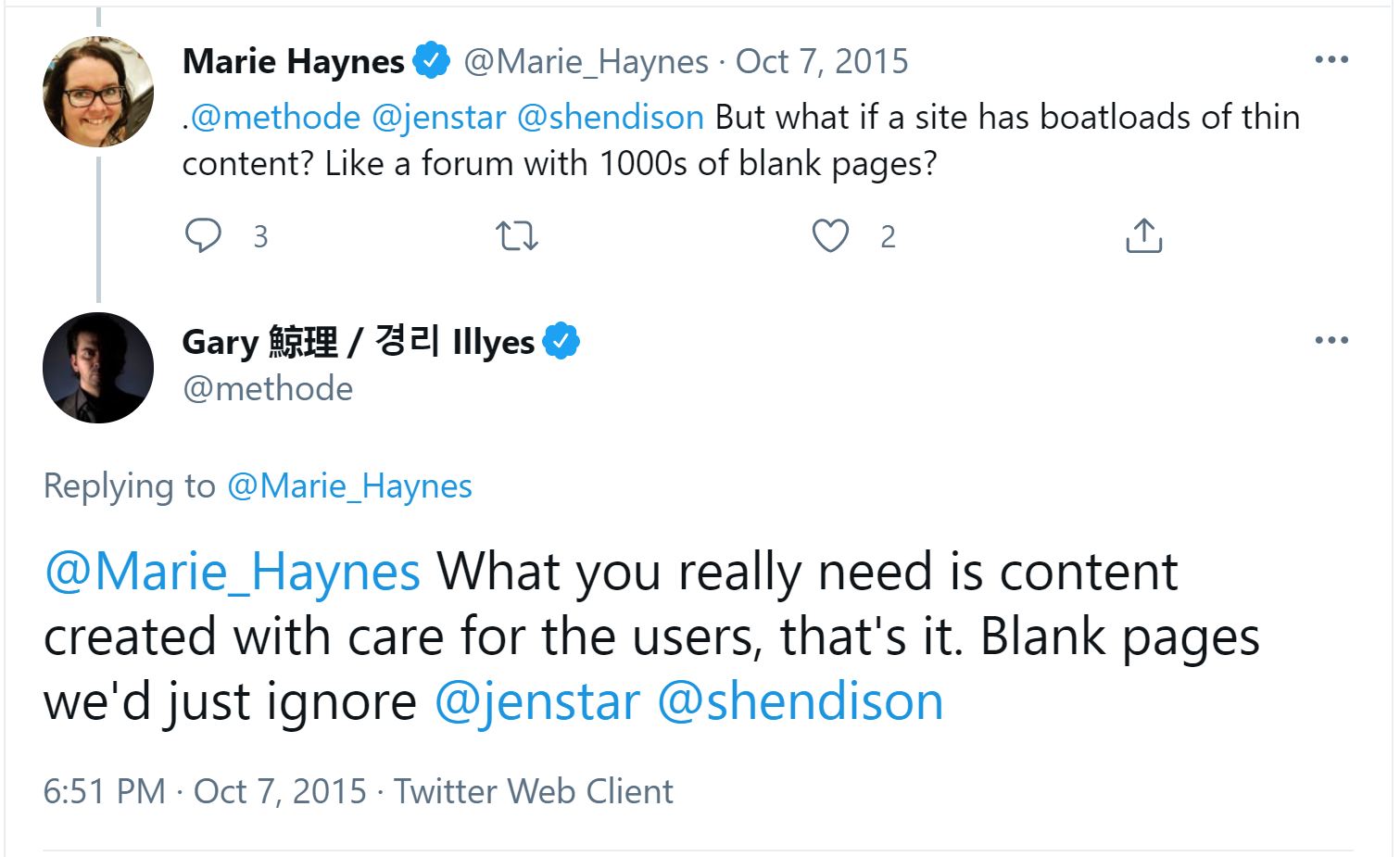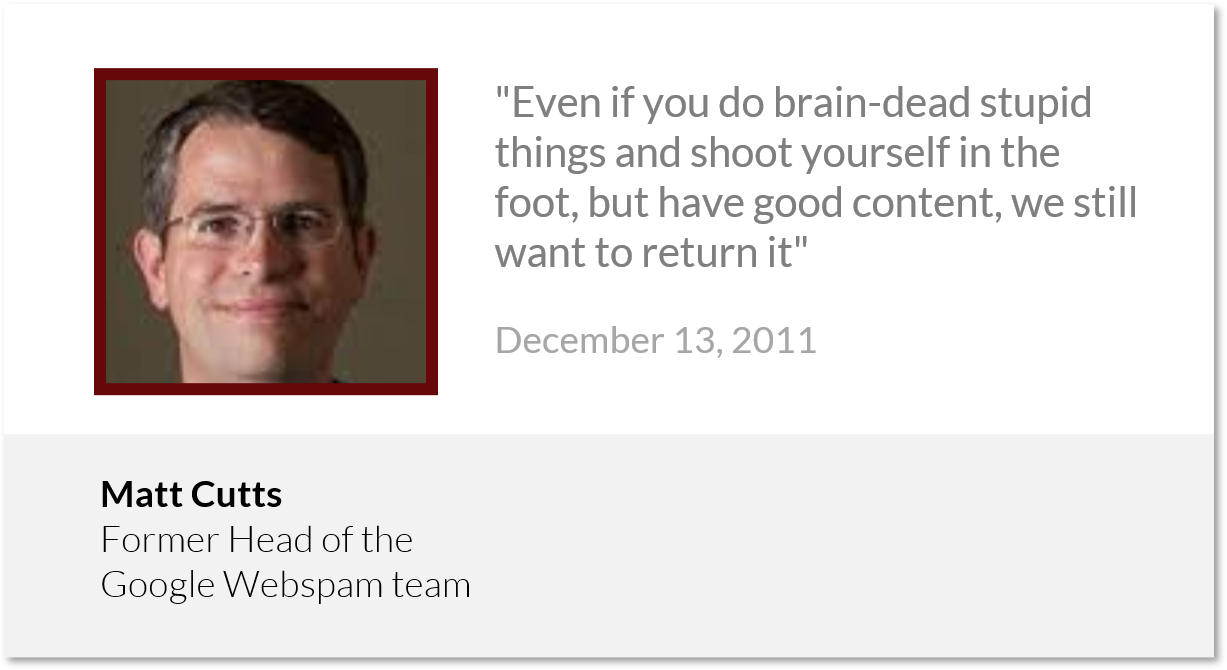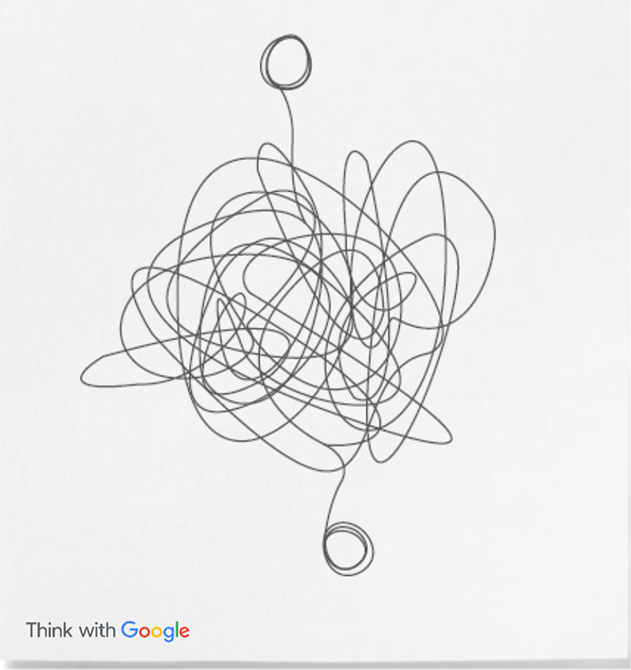As far back as 2011, Google has been giving clear signals about what websites need to do to rank well. Ultimately, it comes down to providing users with high-quality, relevant content that answers their questions, which is more difficult to do than you think.
In this episode of the award-winning Here’s Why digital marketing video series, Eric Enge shares a timeline of the signals Google has provided over the years and discusses why a good SEO strategy centers around user intent.
Don’t miss a single episode of Here’s Why. Click the subscribe button below to be notified via email each time a new video is published.
Resources
- Think with Google paper, “Decoding Decisions: Making Sense of the Messy Middle.”
- The Power of User Intent Matters for SEO
- Why Mapping User Needs is Critical to SEO
- See all of our Here’s Why Videos | Subscribe to our YouTube Channel
Transcript
Eric: Hey, everybody, Eric Enge here. I’m the Principal for the Digital Marketing Solutions business unit at Perficient. In today’s episode, I’m going to focus on why user intent is so important to SEO.
Let me actually start by showing you some tweets by Googlers over the years.
First, most recently of the ones I’m going to share today, Danny Sullivan back in October of 2019, talking about the BERT algorithm by ending his tweet with, “The fundamentals of us seeking to reward great content remain unchanged.”

Or step back a little earlier that year when he’s answering a tweet from somebody else, it’s like, you know, “Want to do better with a broad change? Have great content.”

And then back a little bit further, Gary Illyes being questioned by someone about an affiliate site and why it’s ranking so well, to which Gary says, “Have you seen what @thepointsguy is doing? They create amazing content. And they have sponsored links, but the focus is on the user.”

And then now in response to Marie Haynes’ tweet asking about a site that has a lot of blank pages, and is that harmful? And here’s what Gary says, “What you really need is content created with care for the users, that’s it. Blank pages, we’d just ignore.”

And if that isn’t enough, because now I’m all the way back to 2015 with that tweet, I’m going to go all the way back to 2011. And for those of you who’ve been in the industry a long time, you’ll know this name, Matt Cutts.
“Even if you do brain-dead stupid things and shoot yourself in the foot, but have good content, we still want to return it.”

So, you kind of see a theme in how the central focus of all these tweets and communications from Google have been about great content targeted at users. And this is Google’s central purpose and direction with a great majority of their algorithm updates is to drive increased satisfaction in terms of the way users experience their search engine. And it’s really the big reason why their user satisfaction level has consistently hovered around the 80% level all the way back to 2002.
But it’s more difficult than you think. We can learn a lot from a Think with Google paper called “Decoding Decisions: Making Sense of the Messy Middle.” By the way, thanks to Greg Sterling for giving me a copy of that and making me aware of it. What users want and need is highly complex and shows great variance from user to user. For example, on the screen right now, you’ll see Google’s original rendering of what this is like.

Yes, it looks like a pile of spaghetti. And for users, it is much like this in their experiences of websites. And you can relate it to how things were in primordial times. As a caveman, you would evaluate the effort it was to hunt the food versus the energy gained once you killed it. Was it worth the time and the effort?
In a shopping context, let’s say I’m a user and I have seven aspects I care about in buying a product, how hard is it going to be for me to execute what I’m trying to do on this site, which includes making sure that those seven aspects are all satisfied? And it also wraps back to the concept of EAT, not only how much effort is it going to be to execute this purchase, but how comfortable am I that this is a good place to buy this thing? Will they take care of me as a customer? Will it work when I get it? Will I have any problems? If I need help, will I be able to get customer service? And all of these things matter to me.
Ultimately, what I’m trying to illustrate here with these examples, discussions I’ve had in today’s video, is these are clear signals on the direction in which Google is headed. They should be clear signals to us for the direction we need to head in too.
So, hopefully, you enjoyed today’s episode of “Here’s Why.” If you did, please click on the link below to subscribe so you won’t miss any future episodes.
Don’t miss a single episode of Here’s Why. Click the subscribe button below to be notified via email each time a new video is published.
See all of our Here’s Why Videos | Subscribe to our YouTube Channel

